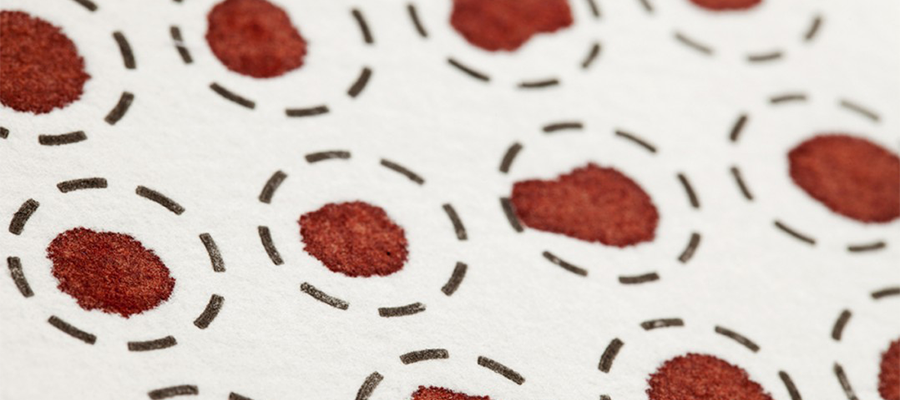Serological immunoassays provide a complementary approach to PCR-based molecular diagnostics in the detection and monitoring of the immune response of individuals exposed to a pathogen. In addition to providing valuable information on the seroprevalence of infection, these tests also provide insight into the development and duration of immunity in convalescent individuals. This information is essential for the development of intervention strategies, which shed light on questions surrounding the spread of the disease and identify individuals at risk of reinfection.
Serological immunoassays are typically performed by enzyme-linked immunosorbent assays (ELISA) using serum or plasma, however, their application for community- and population-based screening is limited by cost, requirements for clinical settings, and constraints surrounding adequate sample collection, processing and transportation. Therefore, a cost-effective, field-friendly serological approach is required for community- and population-based screening.
Dried Blood Spots (DBS) provide a promising alternative to venepuncture-based sampling by utilizing small volumes of capillary blood blotted onto specialized filter paper. The use of DBS overcomes the cost and logistical challenges associated with venous blood collection and promotes decentralized benefits through self-sampling and ease of shipment (samples can be returned by mail with no cold chain or special handling precautions required).
Development and validation of DBS-based methods have been well documented (Capiau et al. 2019) and have shown promise in serology screening tests (Mohamed et al. 2013) including tests targeting the SARS-CoV-2 virus responsible for the COVID-19 pandemic (McDade et al., 2020; Kirshnamurthy et al., 2020; Sullivan et al., 2020). However, DBS-based methods can be more challenging to develop compared to conventional serum- or plasma-based methods, as most commercial immunoassay kits are not designed for DBS-use.
Furthermore, the development of DBS-based methods must address hurdles associated with the use of whole blood in small volumes (i.e. the effect of haematocrit and sample homogeneity), variation in capillary blood collection technique and increased risk of contamination or carryover (Capiau et al. 2019; Lange et al. 2017). DBS microsampling devices have been developed in an attempt to minimise these challenges, but their use may offset the economic benefit associated with DBS-use, limiting their use in resource-constrained settings.
At Synexa Life Sciences, we are developing a high-throughput serology method for the detection of anti-SARS-CoV-2 antibodies in different human matrices, including DBS-based samples from a range of sampling devices. The development of such a method will allow for a non-invasive, decentralized collection of samples in a manner that will be economically and logistically beneficial in the setting of drug development and monitoring.
References:
- Capiau S, Veenhof H, Koster RA, Bergqvist Y, Boettcher M, Halmingh O, Keevil B, Koch B, Linden R, Pistos C, Stolk L, Touw D, Stove C and Alffenaar J. (2019). Official International Association for Therapeutic Drug Monitoring and Toxicology guideline: Development and Validation of Dried Blood Spot-based Methods for Therapeutic Drug Monitoring. Therapeutic Drug Monitoring. 41. DOI: https://doi.org/10.1097/FTD.0000000000000643
- McDade TW, McNally E, D’Aquila RT, Mustanski B, Miller A, Vaught L, Reiser N, Bogdanovic E, Zelikovich, Demonbreun A. (2020). medRxiv.
DOI: https://doi.org/10.1101/2020.04.28.20081844
- Lange B, Cohn J, Roberts T, Camp J, Chauffour J, Gummadi N, Ishizaki A, Nagaranthnam A, Tuaillon E, van de Perre P, Pichler C, Easterbrook P and Denkinger CM. (2017). Diagnostic accuracy of serological diagnosis of hepatitis C and B using dried blood spot samples (DBS): two systematic reviews and meta-analyses. BMC Infect Diseases. 17. 700.
DOI: https://doi.org/10.1186/s12879-017-2777-y
- Sullivan PS, Sailey C, Guest JL, Guarner J, Kelley C, Siegler AJ, Valentine-Graves M, Gravens L, Del Rio C, Sanchez TH, (2020). Detection of SARS-CoV-2 RNA and Antibodies in Diverse Samples: Protocol to Validate the Sufficiency of Provider-Observed, Home-Collected Blood, Saliva, and Oropharyngeal Samples. JMIR Public Health Surveillance. 24(6): e19054.
DOI: https://doi.org/10.2196/19054
- Krishnamurthy KH, Jayaraman V, Krishna K, Rajasekaran KE, Wang T, Bei K, Rajasekaran JJ, Rai AJ, Choung RS and Murray JA. (2020). Antibody Profiling and Prevalence in the US population during the SARS-CoV2 Pandemic. medRxiv.
DOI: https://doi.org/10.1101/2020.04.29.20085068
- Mohamed S, Raimondo A, Penaranda G, Camus C, Ouzan D, Ravet S, Bouliere M, Khiri H, Dukan P, Olive D and Halfon P. PLoS One, 8(4): e61077.
DOI: https://doi.org/10.1371/journal.pone.0061077



